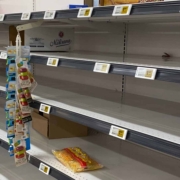Top 3 Ways to Crunch Big Data Into Big Dollars
Note: This is our second blog in our 2-part series on crunching Big Data. If you find this information interesting, be sure to check out part 1 on Big Data & Product Groups as well.
Many are sold on the idea that Big Data provides Retail Demand Intelligence (RDI) and that employing RDI with demand forecasting and inventory optimization will return retail to profitability. The startling truth is that 70-80% of Big Data BI projects fail; typically, we only learn about these projects when we see multi-million dollar accounting write-offs or when cell phone video of winter fur coats in a Hawaii department store shows up on YouTube.
Why was this happening? Perhaps the better question of “Why?” was rooted in the data analysis tools that were used to group products and locations together for allocation and assortment planning. How do we avoid this situation?
- Product / Location Groups Based on Your Business Goals
- Dynamic Exception Management
- Use Today’s Cutting-Edge Technology
Effective inventory optimization revolves around targeted reviews and management. Big Data provides us with the building blocks for dynamic product/ location groups that we can use to measure and analyze our business. We don’t store and analyze Big Data to write about it in blogs (well, most of us); we use Big Data to help us break down our information into meaningful groups that we or the computer can manage.
We use these product/location groups for ranking, score carding, replenishment, price optimization, inventory optimization, allocation and assortment planning, and a myriad of other uses in the review and management of our business. Since one cannot correctly judge the entirety of a business by a single set of KPIs, the need exists to break the business into groups. While this is overstating the obvious (too late, sorry), the reality is that, too often, the product groups that businesses are using do not deliver the results that they expect because of how the groups are created or maintained.
Big Data: Product / Location Groups Based on Your Business Goals

Product grouping should be based on criteria set by the merchant and supply chain teams. The teams should be able to incorporate location and product data to tune the groups. Automation should update the group members based on these business rules with a regular schedule set by the user group. Some product groups should be auto-populated (like products in the weekly ad). Other groups could be created based on company goals that filter down to each segment of the product hierarchy.
More Money: Big Data Ideas for your Retail, Wholesale, or Grocery Supply Chain
Our customers are building alerts that say if available inventory falls below X days and nothing is on order, then send an alert to the supplier or DC. They then take these two business rules (Inventory Availability and Inventory On-Order) and attach them to the automatically preloaded weekly ad product/locations group and let the computer do the work. Now they can spend more time planning the future events because they are not spending most of their time reacting to the past. Our customers enjoy a system where their product groups are analyzed for accuracy and automatically updated. In this example, our system recreates the product group each week based upon data from the client marketing database. Similarly, the product group can be auto-updated based upon business rules or arbitrary selections.
Any of these product groups can be scheduled for alerts, exception management, or updates to forecasting at the click of a button.
As another idea, you could create a group of top 25 products in your department based on the next 8 weeks forecast. Then, you could tell the system to update the group weekly and to name it “My Top 25 Weekly.” Then you create an alert called “out of stock and no order,” attach the business rule to your custom group, and instantly have the satisfaction of knowing you just cut 20 emails and 15 phone calls out of your weekly agenda.
What about price optimization? With the ability to set product groups based on business rules for product and location data, the system can auto manage your price changes to make certain the right optimization happens at the right store.

Still using Excel to Manage your Big Data?
Unlike other systems, Data Profits allows grocers, wholesalers, and retailers to custom create dynamically updated product-location groups. These groups are based on your custom business rules, hierarchy, weekly ads, or market events like weather, holidays, and emergencies (hurricanes and ice storms).
This functionality automatically updates the forecast and orders for that “event” at a particular location or store based on all the possible factors. You can write custom alerts against these groups and share exceptions to vendors for immediate action, improving supply chain visibility. We include this functionality out of the box with a complete BI toolset, install in 30 days, and a price point that’s less than 1/2 the competition price.
Don’t send winter coats to Hawaii again.
Special Thanks
In closing our two part series, for their valuable time, input, and feedback on the important topics of Big Data, Product / Location Groups, and Exception Management, we would like to thank:
Randy Buffon
VP Inventory Management
Hibbett Sports®Carol Klos
Systems Implementation Manager
Pamida Stores®
About Data Profits
Data Profits provides powerful tools to leading retailers, grocers, and wholesalers to help them find more profit in their data. Would you like to see how easy and fast it is to set up dynamic product groups in iKIS? Request a demo, and we’ll show you how we do it.
- Demand Forecasting: The Ultimate Secret for Your Organization’s Success - August 7, 2024
- How to Avoid Carrying Cost Mistakes in Inventory Optimization - June 10, 2024
- 3 Common Forecasting Software Issues and How to Fix - May 20, 2024









